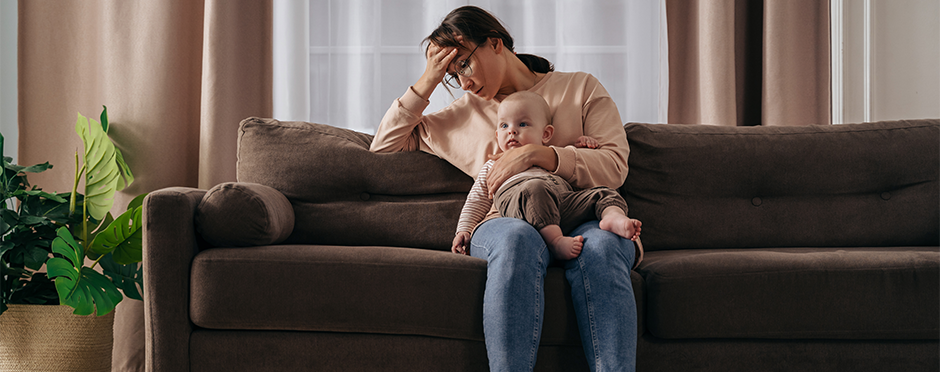
Empowering Birth Parents: How To Triumph Over Postpartum Challenges
Leave a CommentEmbarking on the postpartum journey can be daunting, especially when faced with the surprising reality that 1 in 3 individuals experiences urinary leakage following childbirth. What’s even more concerning? A staggering 76% of those grappling with urinary leakage at three months postpartum continue to struggle with it 12 years later.
Acknowledging The Issue
Urinary leakage may be common, but it’s not normal. Often, it signals poor pelvic floor muscle function.
Unveiling The Role Of The Pelvic Floor
The pelvic floor muscles, nestled inside the pelvis, play a crucial role, contracting and relaxing in response to movement and activity4. Despite their significance, we typically only notice them when something goes wrong.
Recognizing The Symptoms
Problems with pelvic floor muscles manifest through various symptoms:
- Leaking with sneezing, laughing, or activity
- Running to the bathroom often
- Straining to urinate
- Difficulty controlling gas
- Fecal incontinence
- Excessive straining with bowel movements
- Pain with intercourse
- Feelings of pressure in your pelvis
- Feelings of something falling out of your vagina
- Low back pain
- Pelvic girdle pain
- Hip pain
The Reality Of Postpartum Health
Surprisingly, there are no clear guidelines for returning to exercise or sports after giving birth in the US5. The musculoskeletal system is often overlooked during the postpartum journey, potentially impacting safe returns to activity and leading to persistent pelvic floor issues.
Effects Of Pregnancy
Pregnancy induces major changes, with abdominal muscles stretching 115% and pelvic floor muscles stretching to 250% of their resting length6. The idea of immediately ‘bouncing back’ after childbirth is unrealistic, but with the right tools and resources, a smooth and successful recovery is possible.
Retraining Your Core
Retraining your core and optimizing pelvic floor function post-delivery is crucial for a leak- and pain-free return to activity. The true core includes the muscles of the abdominal, lumbar, diaphragm, and pelvic floor4. They all work together as a team, reacting to changes in intra-abdominal pressure during activity.
Getting Started
Exercise guidance and birth preparation starting in the first trimester can better prepare you for labor and delivery, encouraging a quicker return to exercise and sport5. Simple breathing exercises postpartum can restore the diaphragm-pelvic floor connection, aiding recovery.
Seeking Professional Help
For those experiencing urinary leakage or other symptoms, consulting a pelvic health therapist is crucial. Pelvic health therapists possess advanced training on pelvic floor matters, in addition to a doctorate in physical therapy, and can provide a thorough assessment and tailored treatment plan.
Athletico proudly offers pelvic health services at various locations. Remember, advocating for your health in the pre- and postnatal period is key. You’re not alone; seeking the right support can make all the difference.
Find a Pelvic Health Therapist Near You
The Athletico blog is an educational resource written by Athletico employees. Athletico bloggers are licensed professionals who abide by the code of ethics outlined by their respective professional associations. The content published in blog posts represents the opinion of the individual author based on their expertise and experience. The content provided in this blog is for informational purposes only, does not constitute medical advice and should not be relied on for making personal health decisions.
References:
1. Dakic et al. Effect of pelvic floor symptoms on women’s participation in exercise: a mixed-methods systematic review with meta-analysis. JOSPT. 2021;(0):1-54
2. Dasikan et al. Pelvic floor dysfunction symptoms and risk factors at the first year of postpartum women: a cross-sectional study. Contemporary Nurse. 2020;56(2):132-145.
3. MacArthur et al. Urinary incontinence persisting after childbirth: extent, deliver history, and effects in a 12-year longitudinal cohort study. BJOG. 2016;123(6):1022-1029
4. Hodges et al. Postural and respiratory functions of the pelvic floor muscles. Neurourol Urodyn. 2007;26(3):362-71.
5. Selman et al. Maximizing recovery in the postpartum period: a timeline for rehabilitation from pregnancy through return to sport. Int J Sports Phys Ther. 2022;17(6):1170-1183.
6. Svabik et al. How much does the levator hiatus have to stretch during childbirth? BJOG. 2009;116(12):1657-1662.
